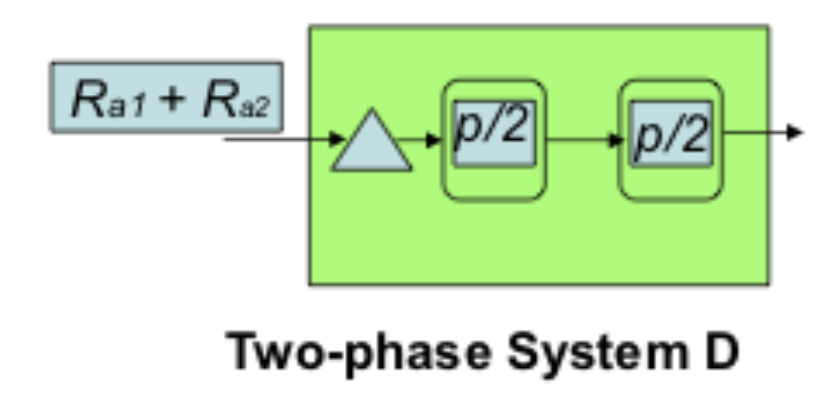Question
The three systems being considered are shown below, where the arrow denotes flow with arrival rate R ak , for stream k = 1, 2,
The three systems being considered are shown below, where the arrow denotes flow with arrival rate Rak, for stream k = 1, 2, the triangle represents the waiting line or queue and the rectangles represent processing by a server with specified average unit processing time the two rectangles inside a larger rectangle in System B corresponds to a two-server station; System C is a single-server station with average unit process time cut by 50%. Assume values for Rak and p, for instance, take Ra1 = Ra2 = 0.95 customers per hour, p = 1 hour. Unless otherwise stated, assume all coefficients of variation are 1.0. In the class on waiting lines, we have seen that the independent system A has higher time in queue than the pooled system B. In II.1 & 2 below, we compare systems B and C.  Suppose that the fast server in System C is unavailable. Instead, the process design team is considering System D depicted below which splits the single step in System B into two sequential steps of equal process time, with no inventory allowed between the two steps. Is System D is an improvement over System B or not. [Note: No formulas are needed to answer this question, just try to use a qualitative argument.]
Suppose that the fast server in System C is unavailable. Instead, the process design team is considering System D depicted below which splits the single step in System B into two sequential steps of equal process time, with no inventory allowed between the two steps. Is System D is an improvement over System B or not. [Note: No formulas are needed to answer this question, just try to use a qualitative argument.] 
Step by Step Solution
There are 3 Steps involved in it
Step: 1

Get Instant Access to Expert-Tailored Solutions
See step-by-step solutions with expert insights and AI powered tools for academic success
Step: 2

Step: 3

Ace Your Homework with AI
Get the answers you need in no time with our AI-driven, step-by-step assistance
Get Started


